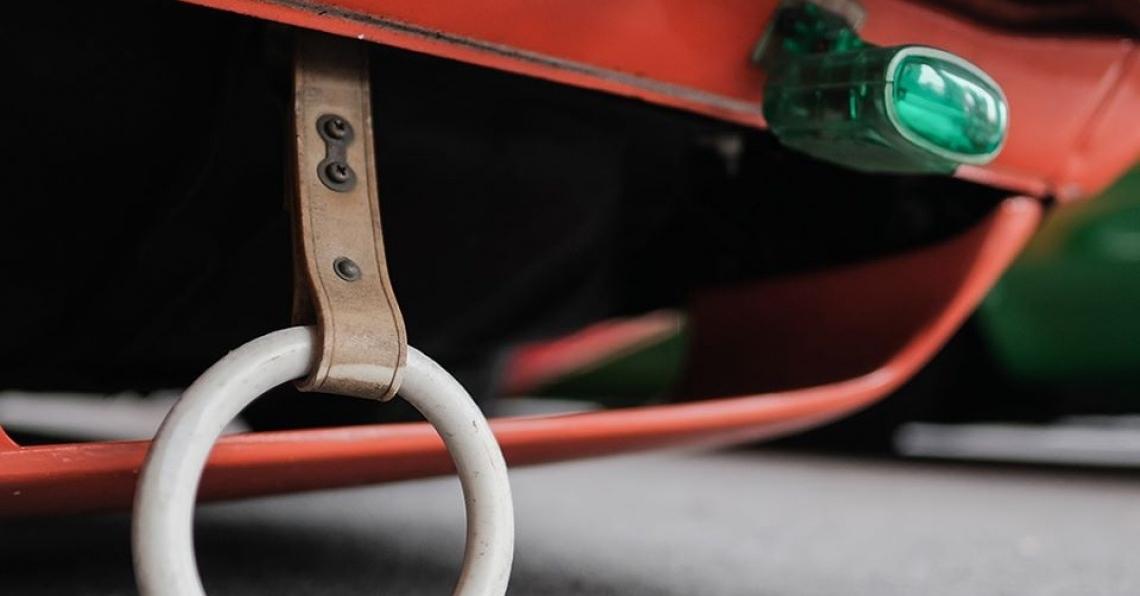Are you curious to know what is a tsurikawa? You have come to the right place as I am going to tell you everything about a tsurikawa in a very simple explanation. Without further discussion let’s begin to know what is a tsurikawa?
In the world of automotive culture, certain accessories go beyond functionality—they become symbols, storytellers, and conversation starters. One such intriguing addition is the Tsurikawa. But what exactly is a Tsurikawa, and why does it hold such significance in the automotive realm? Let’s explore this fascinating accessory, unraveling its purpose, origins, meanings, and much more.
What Is A Tsurikawa?
A Tsurikawa, often referred to as a “train handle” or “subway strap,” is a strap or handle typically made of metal or nylon attached to the chassis of a vehicle, specifically cars. Originating from Japanese train handles, these accessories have found their way into car culture, serving purposes beyond their original intent.
What Is A Tsurikawa Handle?
The Tsurikawa handle, characterized by its sturdy construction and unique design, serves as a handhold within the interior or exterior of a vehicle. It’s not just a practical addition but also a statement piece for automotive enthusiasts.
What Is A Tsurikawa For Cars?
In the realm of cars, a Tsurikawa serves multiple functions. Beyond its utilitarian purpose of providing a gripping point for passengers, it has evolved into a symbol of personalization and a reflection of the owner’s style and connection to automotive culture.
What Is The Point Of A Tsurikawa?
The Tsurikawa transcends its physical function. It symbolizes the connection between the car and its driver/passengers, evoking a sense of unity, passion, and individuality within the automotive community. Its significance goes beyond mere practicality.
What Is A Tsurikawa Ring?
A Tsurikawa ring refers to the circular or looped design of the handle, resembling the rings found on train straps. This ring-like structure adds to its distinctive appearance and contributes to its symbolic value within the car culture.
What Is A Tsurikawa Used For?
Primarily used as a gripping point, especially in older vehicles or cars with modifications where interior handles might be scarce, a Tsurikawa also serves as a style statement and a conversation piece among enthusiasts.
Tsurikawa Heart Meaning And Broken Heart
Within the automotive community, the Tsurikawa has acquired symbolic meanings. Some enthusiasts associate it with the heart of a car, signifying the emotional bond between the owner and their vehicle. The term “broken heart” might refer to a Tsurikawa that has been damaged or removed, signifying a loss or change in the car’s identity.
Tsurikawa Origin And Evolution
The Tsurikawa’s roots trace back to Japan’s train handles, where these straps were used for stability and safety within crowded train compartments. Over time, this utilitarian item became a cultural phenomenon, transitioning from trains to cars and evolving into a symbol of automotive passion.
Tsurikawa Placement And Significance
The placement of a Tsurikawa varies, often found either inside the car, attached to the grab handles, or externally, near the chassis. This placement isn’t just about convenience; it’s about showcasing individuality and personal style within the automotive community.
Tsurikawa And Google Translate
For those unfamiliar with the term “Tsurikawa,” Google Translate can be a useful tool. However, understanding its cultural significance, history, and symbolism requires a deeper dive into automotive culture and its ties to Japanese influences.
Conclusion
In conclusion, the Tsurikawa isn’t just a car accessory; it’s a symbol that tells a story—a tale of heritage, passion, and individuality within the automotive world. From its humble origins in train handles to its evolution as a cherished emblem of automotive culture, the Tsurikawa stands as a testament to the deep connection between enthusiasts and their beloved cars. Its significance goes beyond its practical use, embodying a sense of community and personal expression on the road.
FAQ
Why Do People Put Tsurikawa On Their Cars?
Since the 1970s, members of Bosozoku (暴走族,Japanese biker gangs) would steal Tsurikawa and attach them to their bikes and cars as a sign of rebellion. It became their way to distinguish themselves from mainstream society and demonstrate their affliation with the subculture.
What Is Tsurikawa Ring For?
The origin of tsurikawas: Stolen in trains by Japan young gangsters, also known as bosozokus, the tsurikawas were originally attached inside cars so passengers could slide their wrist inside the ring and safely hang their body outside the window.
What Does The Tsurikawa Handle Heart Mean?
The meaning of Tsurikawa or JDM Train Handle “hang ring” is essentially a hand strap people use to hang on to when riding the bus or subway standing. The JDM Tsurikawa eventually became a sign of rebellion used by members of the Bosozoku. Tsurikawa rings come in shape of a circle or heart Japanese subway handle.
Where Do You Hang Tsurikawa?
[WHERE TO INSTALL] Perfect to be installed in rear bumper as a warning sign to reduce rear-end accidents, you can also install in car as handles for passengers or car interior decoration. Suitable for cars, trains, subways, buses, etc.
I Have Covered All The Following Queries And Topics In The Above Article
What Is A Tsurikawa Handle
What Is A Tsurikawa For Cars
What Is The Point Of A Tsurikawa
What Is A Tsurikawa Ring
What Is A Tsurikawa Used For
Tsurikawa Heart Meaning
What Is A Tsurikawa Ring
Tsurikawa Origin
Tsurikawa Car
Tsurikawa Google Translate
Tsurikawa Broken Heart
Tsurikawa Placement
What Is A Tsurikawa









